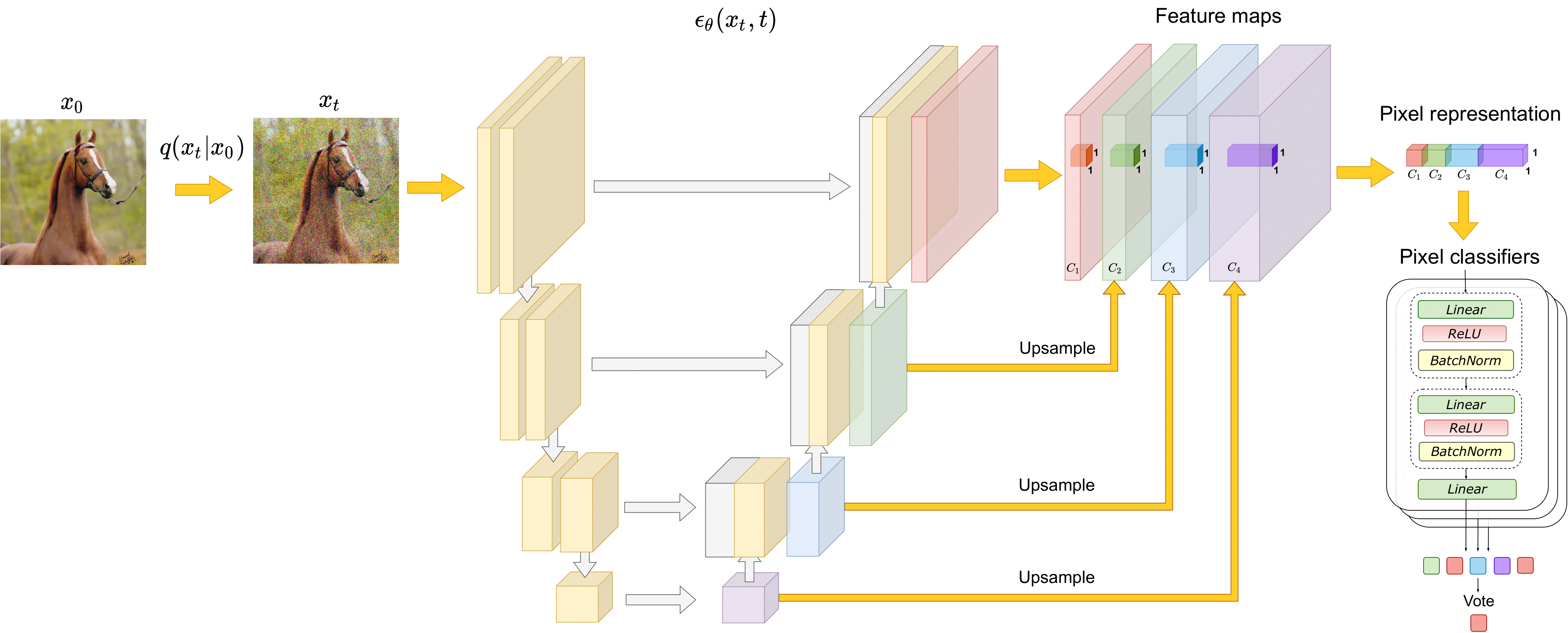Label-Efficient Semantic Segmentation with Diffusion Models
Denoising diffusion probabilistic models have recently received much research attention since they outperform alternative approaches, such as GANs, and currently provide state-of-the-art generative performance. The superior performance of diffusion models has made them an appealing tool in several applications, including inpainting, super-resolution, and semantic editing. In this paper, we demonstrate that diffusion models can also serve as an instrument for semantic segmentation, especially in the setup when labeled data is scarce. In particular, for several pretrained diffusion models, we investigate the intermediate activations from the networks that perform the Markov step of the reverse diffusion process. We show that these activations effectively capture the semantic information from an input image and appear to be excellent pixel-level representations for the segmentation problem. Based on these observations, we describe a simple segmentation method, which can work even if only a few training images are provided. Our approach significantly outperforms the existing alternatives on several datasets for the same amount of human supervision.
PDF Abstract ICLR 2022 PDF ICLR 2022 Abstract





 ImageNet
ImageNet
 FFHQ
FFHQ
 LSUN
LSUN